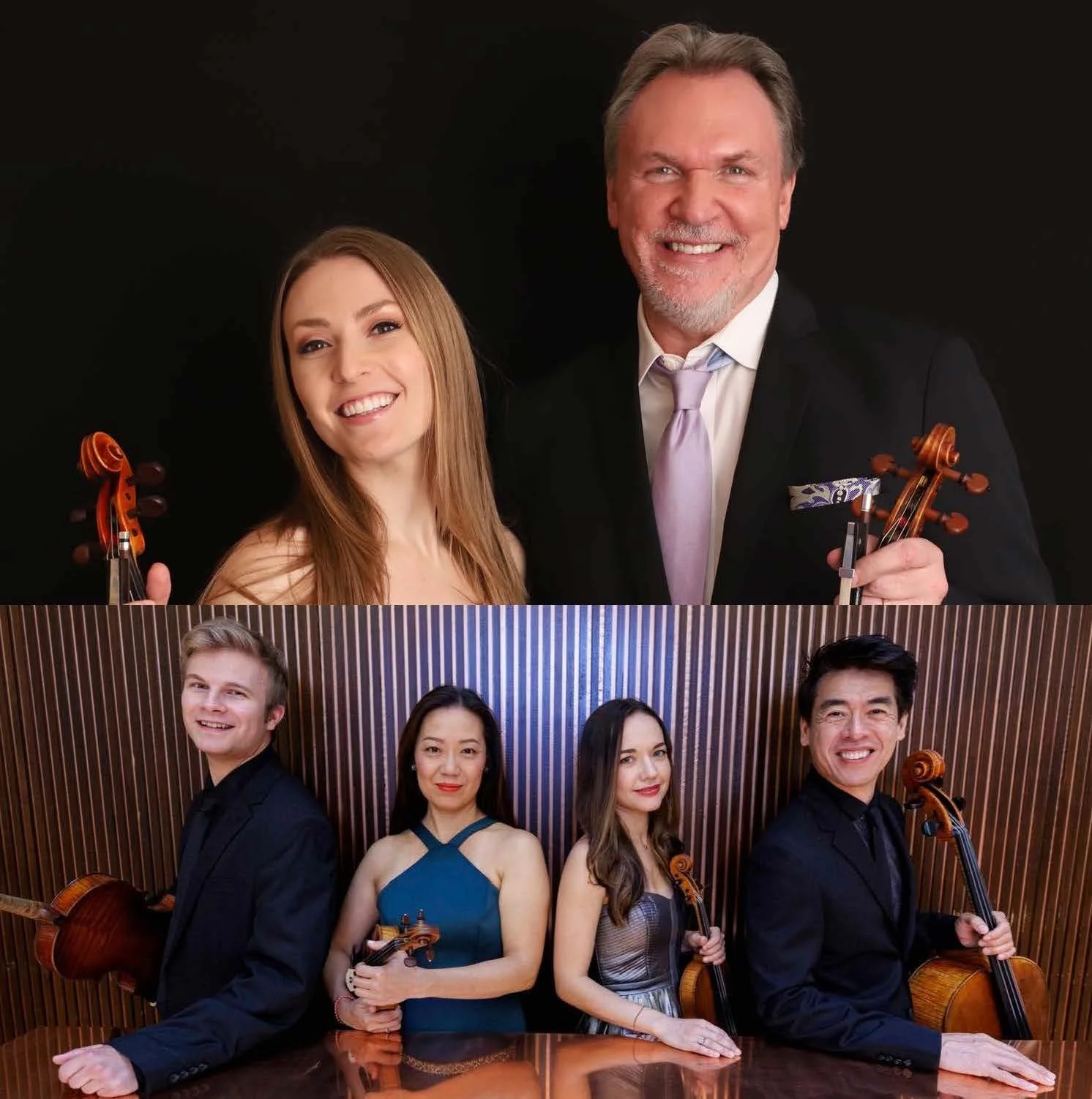On April 25, the three-time Grammy-award winning multi-instrumentalist Mark O’Connor brings his “Beethoven and Bluegrass” program to Carnegie Hall. Joining him onstage are the Vega Quartet and bluegrass musician Maggie O’Connor. The Vega Quartet performs Beethoven’s String Quartet Op. 95 and O’Connor’s String Quartet No. 2; Mark and Maggie play bluegrass duos; and all six string players come together to play O’Connor’s famous “Appalachia Waltz.”
We spoke to him about this special program, composing a modern-day classic, and so much more. Tickets to the April 25 concert at Carnegie Hall, presented by Emory Chamber Music Society of Atlanta, available here.
You’re well known as a fiddler, and you’re also a composer of concert music. Tell us a bit about your training. Which genre came first and how do you balance the two?
This answer will be nearly as complex as your question! In brief, I began with classical guitar instruction at six and studied in this manner until adding fiddle instruction five years later at age 11. I delved into all of the bluegrass instruments as a multi-instrumentalist at that time, including the change from classical finger-style on a nylon-string guitar, to steel-string with a flat-pick. By age 14, I added jazz music studies and began to compose progressive string band type music. After stints with great internationally-known instrumental bands and a session-playing career in Nashville on the fiddle, guitar and mandolin, I returned to the classical music setting for my compositional output wholeheartedly. I composed string quartets, trios, duos, solos, piano trios, orchestral symphonies, suites, nine concertos and more.
How does Beethoven fit into the “Beethoven and Bluegrass” program? That is, how is his music complementary to bluegrass music?
The 11th string quartet (Op. 95) by Beethoven will be performed, as well as my own 2nd string quartet subtitled “bluegrass.” These two pieces will make up half of the program, performed by the wonderful Vega Quartet. The connection of Beethoven to bluegrass music here is principally through my string quartet compositions—with Beethoven being the key inspiration to my own quartet writing even though my music is wholly American music. Mine takes the form of a new style and sound that listeners will not have heard before, but its compositional complexity in form, texture and characteristic setting makes for a remarkable pairing that surprises most everyone by how well it works. To this day, it even surprises me frankly as we’ve repeated the program many times because audiences have loved this unique offering. Rather than a classical music style of string-playing that Beethoven’s music demands, my quartet music compels the musicians to utilize a modernistic musical language and playing techniques that I uncover from my own progressive bluegrass music experiences. This kind of playing instructs my themes and development in the compositions. Audiences pick up on an exciting contrast that exists across 200 years and 2 continents, played by exactly the same four instruments.
Part of this program features you performing duos with your wife Maggie. What are the challenges (and rewards!) of performing as a duo, without a band?
The duo with my wife Maggie is something we’ve been honing since we met 10 years ago. It first began with just the two fiddles performing my duo compositions. We created an electrifying blend on the originals and for my arrangements of American classics. Given our predisposition for musical exploration, we began to reach further within our duo setting, and this was the challenge you ask about. We wanted to keep growing the duo. We added back into the picture my guitar and mandolin playing I had ignored for years. Then we began to sing more. Maggie’s is an authentic Americana story-telling voice, so it inspired me to write more music. Not just string music but vocal songs. Maggie even plays hand percussion on one of our tunes, and her percussive “chopping” on the violin feels like a whole rhythm section when I solo. We’ve quite literally created a full band out of our duo in performance. For us and our audiences, it is quite the musical journey we’ve taken together across these last ten years. We just kept reaching for more.
The program ends with you and Maggie joining forces with the Vega Quartet for your work “Appalachia Waltz.” This piece is your timeless modern-day classic you composed for Yo-Yo Ma. You must have played this one a thousand times by now.
Likely more than that. “Appalachia Waltz” is now 30-years-old, and I don’t doubt I’ve performed it a hundred times a year. So try three-thousand times! Yo-Yo himself may have played it a thousand times by now! He loves to play this music. Yes, it is extremely lucky that my most famous piece, is also my favorite to play. With composers and songwriters, it is sometimes not the case! But for me, it’s special each time. There is a sense of mystery or intrigue about the music that people pick up on. Where is it coming from, is a common response I think. It sounds to some like a modern-day spiritual. And I think there is a bridge that connects, because you can’t help but feel both nostalgic and optimistic at the same time. It’s quite a splendid moment to hear the Vega string quartet join us for this rendition in the program. Sometimes we’ll comment on how emotional it makes us feel. But most of the time, we just let the music fill the air and see the audience welcome what they hear and take this sensitivity home with them.

